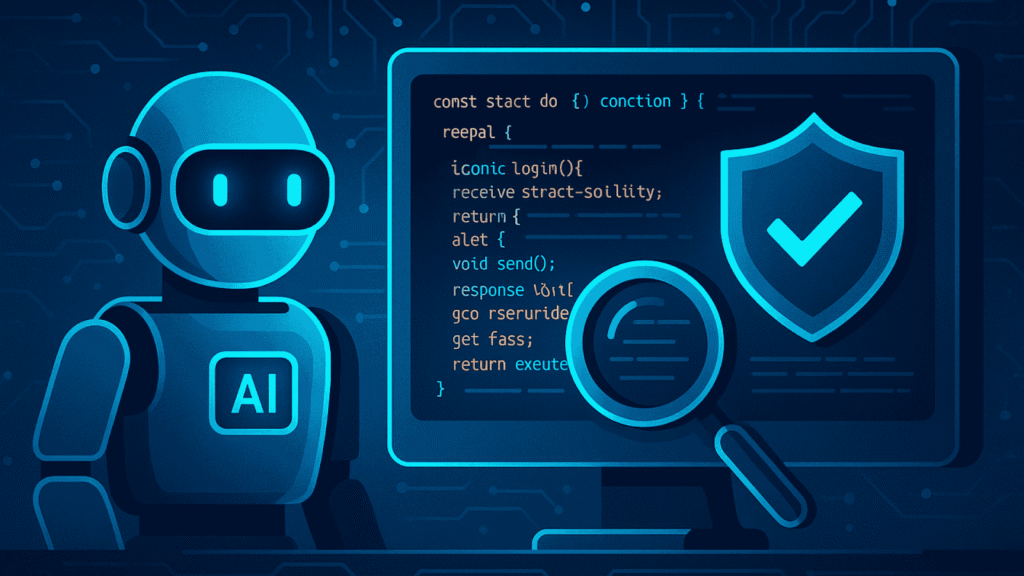In 2025, GPT-powered tools are not just writing smart contracts — they’re auditing them too. As DeFi protocols, NFT platforms, and DAOs continue to scale, the need for reliable, fast, and cost-effective code audits has never been greater. And while traditional firms still play a crucial role, large language models (LLMs) like GPT are now embedded in the audit pipeline — catching bugs, surfacing vulnerabilities, and flagging logic errors in real time.
But just how far can GPT-driven audits go? Can AI be trusted to secure billions in user funds? And where does human expertise still matter?
Here’s what every developer, protocol operator, and investor needs to know.
The Problem with Traditional Smart Contract Audits
Smart contract audits used to be slow, expensive, and reactive. Teams would build a product, ship the code to an audit firm, wait weeks or months for a report, then scramble to patch issues before launch.
That system didn’t scale. As more projects went live, the audit bottleneck became a serious risk. Some launched unaudited or with minimal testing. Others relied on forks of audited code, hoping for the best — often with disastrous results.
Even trusted audit firms have missed critical bugs in the past. The challenge isn’t just reviewing code — it’s doing it under pressure, in short timeframes, with evolving attack vectors.
That’s where GPT models have stepped in.
How GPT Is Being Used in Audits Today
In 2025, GPT-based tools are integrated into nearly every step of the smart contract development cycle. Their main functions include:
- Static analysis: Scanning code for known vulnerability patterns like reentrancy, overflow, underflow, and improper permissioning.
- Logic simulation: Testing how a contract behaves across different scenarios, flagging edge cases and unexpected outputs.
- Code explanation: Converting raw Solidity into plain English summaries, making audits more accessible to non-technical reviewers or DAO governance participants.
- Attack surface mapping: Identifying where user inputs, external calls, or oracles interact with the contract in risky ways.
- Risk classification: Labeling findings by severity, from minor inefficiencies to critical exploits.
These aren’t general-purpose chatbots running audits. They’re fine-tuned models trained specifically on smart contract repositories, vulnerability databases, and past exploits — often outperforming manual reviews on routine code bases.
Faster Feedback, Tighter Iteration Cycles
GPT-powered auditing allows developers to get near-instant feedback on their code. Before a human even looks at it, the model can generate a detailed risk summary, highlight problematic lines, and suggest remediations.
This leads to shorter development cycles. Developers can address issues earlier, saving time and audit costs. Protocols can push more secure updates with fewer delays. DAO contributors can review changes more confidently.
In complex protocols, GPT tools help audit teams focus on higher-order logic instead of boilerplate checks. The AI does the first pass; the experts dig into what matters most.
GPT vs. Human: Complement, Not Replace
It’s tempting to ask: can GPT fully replace human auditors?
Not yet — and maybe never.
GPT models are excellent at identifying known issues and simulating straightforward behavior. But they still struggle with:
- Novel attack vectors: Anything outside its training data — especially zero-day threats or new economic exploits — might go undetected.
- Business logic flaws: AI can check syntax, but it can’t always tell if the contract does what it should do, based on the product’s intent.
- Cross-contract interactions: In multi-contract systems, GPT still has limited ability to reason about emergent behaviors between contracts or external dependencies.
That’s why the best audits in 2025 use GPT as a co-pilot — not a substitute. The model handles repetition and surface-level checks. Humans tackle architecture, intent, and game theory.
Some audit firms even use GPT to generate test cases for fuzzing and formal verification or to write documentation that makes post-audit reviews easier for other teams.
More Accessible Security for Everyone
One of the biggest benefits of GPT-driven auditing is accessibility. In the past, only large, well-funded projects could afford thorough audits. Smaller teams either launched with minimal review or relied on community scrutiny after launch.
Now, open-source GPT tools are letting solo devs and small DAOs get high-quality scans for free or at minimal cost. Protocols like Code4rena, Sherlock, and Hats Finance are also integrating GPT into their competitive audit flows, helping surface bugs before they reach the bounty hunters.
This levels the playing field — especially for emerging-market developers, smaller projects, and ecosystem experiments.
On-Chain Transparency and GPT-Readable Code
Another shift in 2025: more protocols are publishing GPT-readable summaries of smart contracts alongside deployments. These summaries — often AI-generated — explain the contract’s purpose, key functions, and risk factors in natural language.
For DAOs, this makes governance more transparent. Voters no longer need to trust opaque upgrade proposals. They can read a human-readable (and GPT-verified) breakdown of what the code does, what’s changing, and what risks are involved.
Some governance interfaces now even include live GPT prompts: type in a question like “Does this contract have a withdrawal time lock?” and the interface answers in plain terms, citing the relevant code section.
Limits and Cautions Still Apply
As with all things AI, overreliance is a real risk. In 2025, responsible teams apply several safeguards:
- Always review GPT findings manually
- Never deploy unaudited GPT-written contracts to mainnet
- Train models on up-to-date vulnerability data and protocol changes
- Verify summaries against actual behavior, not just AI guesses
The tooling is powerful, but not infallible. GPT can hallucinate explanations, overlook context, or misclassify risk. It’s a tool — not a guarantee.
Final Thoughts
GPT-driven audits are already transforming how Web3 protocols launch and evolve. They’ve made smart contract security faster, more accessible, and more scalable — without replacing the need for human judgement.
As models continue to improve, and as protocols adopt them more widely, the future of crypto security may be written by AI — but validated by people.
In a space where one vulnerability can cost millions, that combination might be the best safeguard we’ve got.

